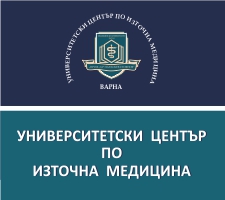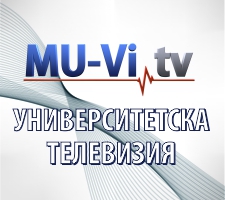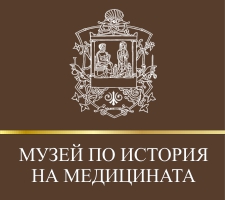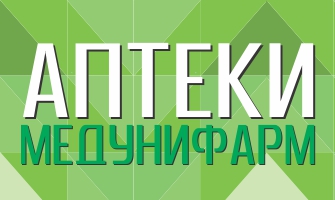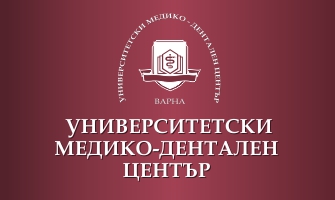At the Neurosurgery Clinic at UMHAT “St. Marina" - Varna, patients can receive treatment for the whole spectrum of chronic pain thanks to the long-standing expertise of the specialists, combined with state-of-the-art equipment. “Chronic pain is a serious medical issue with increasing frequency, related to the ageing population, obesity, sedentary lifestyle, complications following conservative or surgical treatment, etc.," explains Prof. Dr. Yavor Enchev, Head of the Neurosurgery Clinic at UMHAT “St. Marina" – Varna.
Chronic pain treatment requires precise assessment of the application of complex strategies by the specialist. Detailed knowledge and a thorough understanding of the various mechanisms responsible for the chronicity of pain, and consideration of the patient's individual factors, are key components for successful treatment.
Treatment of chronic pain can be both medication-based and surgical. Pharmacological therapy of a pain syndrome includes medications such as antidepressants, nonsteroidal anti-inflammatory drugs, anticonvulsants, muscle relaxants and opioids. Chronic pain often requires a combination of various medications, rehabilitation techniques, behavioural techniques, as well as interventional and surgical techniques.
“Surgical treatment of pain is necessary in cases of unsatisfactory pain relief after conservative therapy, when the pain remains severe, persistent, and worsening over time, as well as in cases where the pain stems from a specific structural or neurological problem that can be remedied through surgical intervention. Recently the latest generation of neuronavigation, C-arm, and neurosurgical operating table, which are unparalleled in the country, have been purchased for the needs of the Neurosurgery Clinic at UMHAT “St. Marina" – Varna, thus elevating the treatment of chronic pain to a world-class level and strengthening the Clinic's position among the leading clinics in the country and abroad," highlights Prof. Enchev and clearly outlines the processes involved in the three most commonly used surgical methods for treating chronic pain.
Cryoablation Neurosurgery uses a cryoprobe to apply extremely low temperatures to tissues such as tumours or nerves that generate or transmit pain. The technique involves precisely directing the cryoprobe to the target area using real-time imaging (C-arm/CT/MRI). The tip of the probe is cooled to extremely low temperatures (-70°C) by circulating carbon dioxide or nitrous oxide. This intense cold freezes and destroys tumour cells or leads to denervation. Imaging diagnostics ensure precise placement of the probe and monitor the ablation process. Through treating the nerve fibers responsible for transmitting pain signals, cryoablation can provide significant and long-lasting pain relief in chronic pain conditions including facet syndrome, failed back surgery syndrome, complex regional pain syndrome, neuropathic pain, nerve-related pain resulting from diabetes, certain types of visceral abdominal pain, and perineal pain.
Spinal Cord Stimulation is a neurosurgical procedure that involves surgically implanting thin wires (electrodes) into the epidural space near the spinal cord, which are connected to a small, implantable pulse generator (battery) placed under the skin that provides electrical current. The electrodes provide personalised electrical stimulation that modulates the nerve pathways in the spinal cord, essentially “jamming" or blocking pain signals reaching the brain. The procedure is applied as a last resort treatment, usually in cases of failed back surgery syndrome, complex regional pain syndrome, and certain types of neuropathic pain, when non-surgical methods have proven to be unsuccessful. The intervention is minimally invasive and aims to improve the patient's quality of life by reducing pain and drug dependence.
An Ommaya Reservoir is an implantable medical device that provides long-term access to cerebrospinal fluid (CSF) for drug delivery or fluid sampling and is used to treat chronic pain, especially when conventional painkillers have failed. This device, placed under the scalp, allows drugs such as morphine to bypass the blood-brain barrier and enter the CNS directly, effectively controlling the severe pain associated with conditions such as advanced cancer. A neurosurgeon implants a dome-shaped plastic reservoir under the scalp. A thin catheter connects the reservoir to a fluid-filled space in the brain known as the ventricle. A needle is inserted through the scalp into the reservoir, bypassing the blood-brain barrier, in order to administer medication. The drugs then enter the cerebrospinal fluid and travel to the brain and spinal cord, providing pain relief. Ommaya reservoirs are used in a selected group of cancer patients who experience pain that is not adequately managed by standard oral painkillers. The device allows the delivery of powerful analgesic drugs, such as morphine, directly into the cerebrospinal fluid (CSF) for targeted pain relief. Patients may experience side effects from the medication, but these can often be managed by adjusting the dose or schedule. Patients and their family members receive training on how to use the Ommaya reservoir to ensure effective pain management at home.
The specialists at the Neurosurgery Clinic at UMHAT “St. Marina" – Varna, who provide consultation and treatment to patients, conclude that a significant proportion of patients with chronic pain eventually develop a need for neurosurgical treatment.

